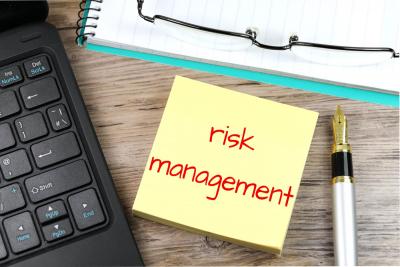
Managing workflow, overseeing formal processes, and maintaining good communication with your team and clients while ensuring efficiency in the delivery of services can be daunting. This is why every business owner needs to develop effective project management skills.
Use the following tips to stay on top of your responsibilities, ensure your team does the same, and reach your project goals.
DEFINE THE PROJECT SCOPE
Define the project scope to manage client expectations, stay on track, meet deadlines, and avoid scope creep. Document the entire project and the processes involved such as goals, resources, tasks, deliverables, deadlines, budgets, and costs. Determine the size of the project and what you want to achieve from it to avoid distractions and stay true to your goal.
Understand project requirements and customer expectations. List all the important details such as business requirements, stakeholder requirements, client requirements, and deliverables. Identify functional and non-functional requirements and agree with the people involved on what you can and can’t do.
Set clear goals. State why you are working on the project, what you want to achieve from it, as well as how you are going to reach your goals. Outline the steps you are going to take to ensure you fulfill your aims.
Consider the available resources to determine whether or not you can achieve the stated goals. For example, can you achieve your objectives with the current resources? Or do you have to make adjustments? Can you finish tasks within the allocated time frame? And can you reach defined goals despite complications that may arise while working on the project?
Include key stakeholders and team members throughout the documentation process to avoid project delays and other common issues. Make sure everyone involved agrees on the type of work that needs to be done and understands their different roles.
Document all the relevant information before the project begins to ensure the project stays within the defined scope and prevent misrepresentation of requirements.
Stick to the documentation and don’t change anything once everything is finalized. Have a change control process to manage changes, ensure resources are used efficiently and avoid service disruptions.
The project scope helps you to identify what’s important and what isn’t. It is key to managing workflow and has a significant impact on the lifecycle of the project. So, prioritize it.
ASSIGN ROLES AND RESPONSIBILITIES
Determine the skills and core competencies required to reach your ultimate goal. Break down the project into smaller pieces and actionable steps to improve productivity and avoid burnout. Assign roles to different team members. Divide the work that needs to be completed and set deadlines for each task.
Determine which tasks require individual effort and which ones need combined effort. Delegate tasks based on employee capabilities and skill sets to ensure efficiency. One person can have multiple roles and multiple people can have identical roles, depending on the nature of your project and work to be completed.
Meet with your team to ensure everyone is on the same page. Clarify what needs to be done and make sure everyone is aware of their responsibilities. Talk about the project scope including goals and client expectations. Empower your team to carry out tasks and meet deadlines.
Address questions, listen to rising concerns and provide solutions. For example, if a team member is concerned about the available time to perform tasks, mention that you reflected on the time factor while working on the project scope and propose the solution you arrived at. Encourage your team to play their different roles and show that you trust them to deliver exceptional work.
Common project management roles include the project manager, project sponsor, resource manager, the steering committee, the risk management team, clients, as well as the project team members.
CREATE A TIMELINE
A project timeline provides a visual overview of project phases including tasks, milestones, dependencies, and deadlines. It gives you a clear picture of your overall work and makes it easy for you to monitor progress, identify completed work, incomplete tasks, as well as pending work.
So, determine how long it’s going to take to reach your ultimate goal. Set the start and end dates.
Consider your main objective and deliverables. What is your ultimate goal? What steps are involved in reaching your aim? What amount of work are you expected to deliver within a certain timeframe? And how many tasks can you finish in a given period?
Divide bigger tasks into smaller actionable ones. Estimate how long it’s going to take to finish each task and set deadlines accordingly.
Consider resource availability. Can you afford to meet deadlines with the money, time, staff, and other relevant resources at hand? For example, can your team afford to take on additional work, maintain efficiency, and deliver quality work? If not, look for ways to ensure that happens. Extend the deadline or automate repetitive tasks.
Determine the type of resources needed by each department and allocate them effectively. Make sure everyone has what they need to carry out roles and meet responsibilities. Encourage team members to communicate challenges, needs, as well as raising issues as they work.
Next, determine project dependencies and identify tasks that depend on each other for completion. For example, what tasks depend on others for their completion? What steps are impossible to take before specific ones? Identify them and assign timelines accordingly.
Set milestones to stay on track and avoid missing due dates. Define milestones to reach within a specific timeframe and have incremental deadlines to increase your chances of success.
Share the project timeline with everyone involved to make it easy for them to understand all the important aspects of the project.
Create timelines to increase efficiency, control costs, hold team members accountable, and easily move tasks around and adjust without disrupting the whole project.
DEVELOP A RISK RESPONSE STRATEGY
Develop a risk response strategy to identify potential risks and map out steps to take when you run into obstructions. Identify problems that are likely to occur and resolve them or determine how you will respond.
Evaluate the impact that the risk will have on the project and respond accordingly. Determine whether or not you can avoid the risk, reduce it, transfer it, or accept it.
Have an action plan and specify steps to take when an unexpected event occurs. Find a way to avoid or eliminate the threat. Weigh its impact on your overall goal and protect your project from it. Depending on the type of risk you are focusing on you can change objectives or extend the timeline.
If you can’t eliminate, reduce, or transfer the risk, accept it. If you notice that your project won’t be affected or the benefits outweigh the risk, continue with the work. If there’s nothing that can be done to address it and you want to take a chance, prepare for it. Consider the outcome and set aside resources to help you recover. For example, have a budget and a risk management policy. Define risk management processes and assign roles to different team members.
Get the stakeholders and your team together once an unexpected event occurs. Especially if it hurts your main objective. Mention the problem you are facing, identify solutions, make the necessary adjustments, and assure everyone you can still meet your goals.
MANAGE YOUR TIME WISELY
Cultivate and improve your time management skills to increase efficiency, improve productivity, and meet deadlines without compromising on quality. Do one thing at a time and avoid multitasking.
Create a task schedule and stick to it. Focus on completing the task at hand and avoid distractions.
Set priorities and determine which jobs require most of your time and efforts.
Do the most difficult or demanding activities during your most productive hours. For example, if you are a morning person, wake up at 5 am and set aside at least an hour to handle challenging tasks.
Have short-term and long-term goals. Set daily goals and write down what you want to accomplish on that particular day.
Set reminders to stay true to your schedule and continuously tick things off your to-do list.
Send reminders for accountability and to boost productivity and ensure everyone meets set deadlines.
Identify and complete minimal tasks before starting work. For example, if you have to send a quick email to clients or employees, do it the minute you get to the office. If you need to send invoice reminders, make sure you do so before you start work or during a break.
If you are managing multiple projects, allocate specific timeframes to each project. Decide when you will focus on project A, for example, and monitor and track progress. Meet with your team and measure productivity. Determine how far team members are from reaching set goals.
Don’t try to manage different projects simultaneously.
IMPROVE YOUR LEADERSHIP SKILLS
Your overall success depends on how well you manage your team and all business processes involved. So, develop and improve your leadership skills to continuously move forward and keep your team motivated. Inspire employees to complete tasks and empower them to do so. Make them realize and feel that they are an important part of the project to ensure success.
Your project may require you to bring together different groups of people from different departments and managing them can be challenging. However, it is the only way to succeed. So, work on your team management skills, encourage interaction amongst team members, and help everyone understand they are working towards a common goal.
Realize that conflicts and disagreements are inevitable and look for ways to deal with them the right way. Have effective conflict resolution strategies to avoid diverting from the work at hand and keep the project moving forward.
Identify and implement the best practices when disputes arise. For example, identify the source of the conflict, listen to both sides of the story, adopt a neutral position, ask for solutions, suggest solutions, reach an agreement, and remain professional throughout the process.
As a leader, you have to identify problems and take initiative. So, remain one step ahead and address issues before they get out of hand.
MANAGE COMMUNICATION
Use effective communication channels to encourage teamwork, keep everyone updated, address questions, offer required assistance, and avoid misunderstandings.
Hold weekly meetings with your team to track progress, share feedback, and communicate recent changes. Encourage people to voice their opinions and mention their challenges or successes.
Identify the best team collaboration tools and use them to manage communication.
Slack, Basecamp, Google Workspace, and Trello are some of the best software to consider.
Agree on the best communication methods with clients to keep up with requests, track changes, and keep them updated.
Decide how often you will meet, what you will discuss, and what channels you’ll use.
Use Zoom Conferencing or Skype for productive meetings.
Keep your meetings short and straight to the point. Write a meeting agenda and stick to it. Identify the purpose of the meeting, define your goals, ask for input, list relevant questions, estimate the meeting length, and end with a review of everything discussed and agreed on.
MEASURE PRODUCTIVITY
Measure productivity to determine how far you are from the main objective and ensure you are moving in the right direction. Measure internal deliverables and external deliverables to track progress and increase your chances of success.
Focus on the project scope and answer key questions; what are your main aims? What processes do you have in place to ensure the completion of work? And how effective are they? If you are failing to reach your goals, make the necessary changes. For example, if employees are having challenges with the new accounting software you chose for handling accounting processes, offer training or choose a user-friendly app.
Consider your communication platforms and find out how effective they are in helping you meet defined goals. For example, does your chosen platform help you communicate effectively with team members and clients? Do employees share feedback and interact as often as expected? If not, identify the cause and address the problem.
Next, measure team productivity and pay attention to individual effort. Pay attention to tasks completed, incomplete work, pending work, and deadlines. Appreciate great work and encourage underperforming teams to improve.
Measure productivity to improve performance, improve processes, meet deadlines, and determine whether or not you can accept new clients.
CREATE A KNOWLEDGE BASE
A knowledge base helps customers solve common issues without your intervention. It is a great way to increase efficiency, save time, and provide great customer service. A knowledge base often includes troubleshooting instructions, answers to frequently asked questions, how-to guides, and important information about a service, product, topic, or department.
So, create one for your customers and use it to address common questions, offer solutions to common problems, and increase employee productivity.
Identify frequently asked questions and work with your team to produce helpful content.
Choose the right format for all your articles. For instance, pick a descriptive title and use short paragraphs and bulleted lists where applicable.
Provide simple and easy-to-follow instructions. Choose a topic, identify a problem, and provide a solution.
Provide step-by-step instructions and use images to make it easy for customers to follow along.
Add a ‘Search’ function to make it easy for clients to find the information they need.
Create and add a FAQ section on your website. Choose a simple design and structure.
Implement the best practices, for instance, share links to your knowledge base across social platforms and update it with every service or product update.
Get knowledge base templates from SurveyMonkey, InVision, HubSpot, or Optimizely to speed up the process.
USE THE BEST TOOLS
Keeping up with client requests, monitoring performance, managing processes, and dealing with daily demands can be challenging. So, identify and use the best project management tools to increase your chances of success and ensure desired outcomes.
Use the software to manage projects, create tasks, assign roles, set due dates, mitigate delays, manage resources, schedule team meetings, increase team collaboration, and track progress.
The best tools to consider are Basecamp, ProofHub, Microsoft Workflow, Asana, Kissflow Project, Smartsheet, Trello, and Zoho Projects.
Most of these tools are easy to use and come with a free plan so you can experiment with ones you are interested in before upgrading to a paid plan. Premium packages give you access to more advanced features and make it easy for you to reach your goals faster.
Use the right software that gives you the flexibility you need and allows you to meet your goals. Consider your main objective, specified roles, as well as your budget. Go with the platform that suits your needs and makes it easy for you to track and manage work.
Here are the most important features to look for when choosing the best project management app:
• Simplicity and intuitiveness
• Custom dashboards
• Task scheduling tools
• Team collaboration
• Task management
• Real-time reporting
• Time tracker
• Security
• Browser compatibility
• Scalability
• Integration with other relevant apps
Best of luck!



